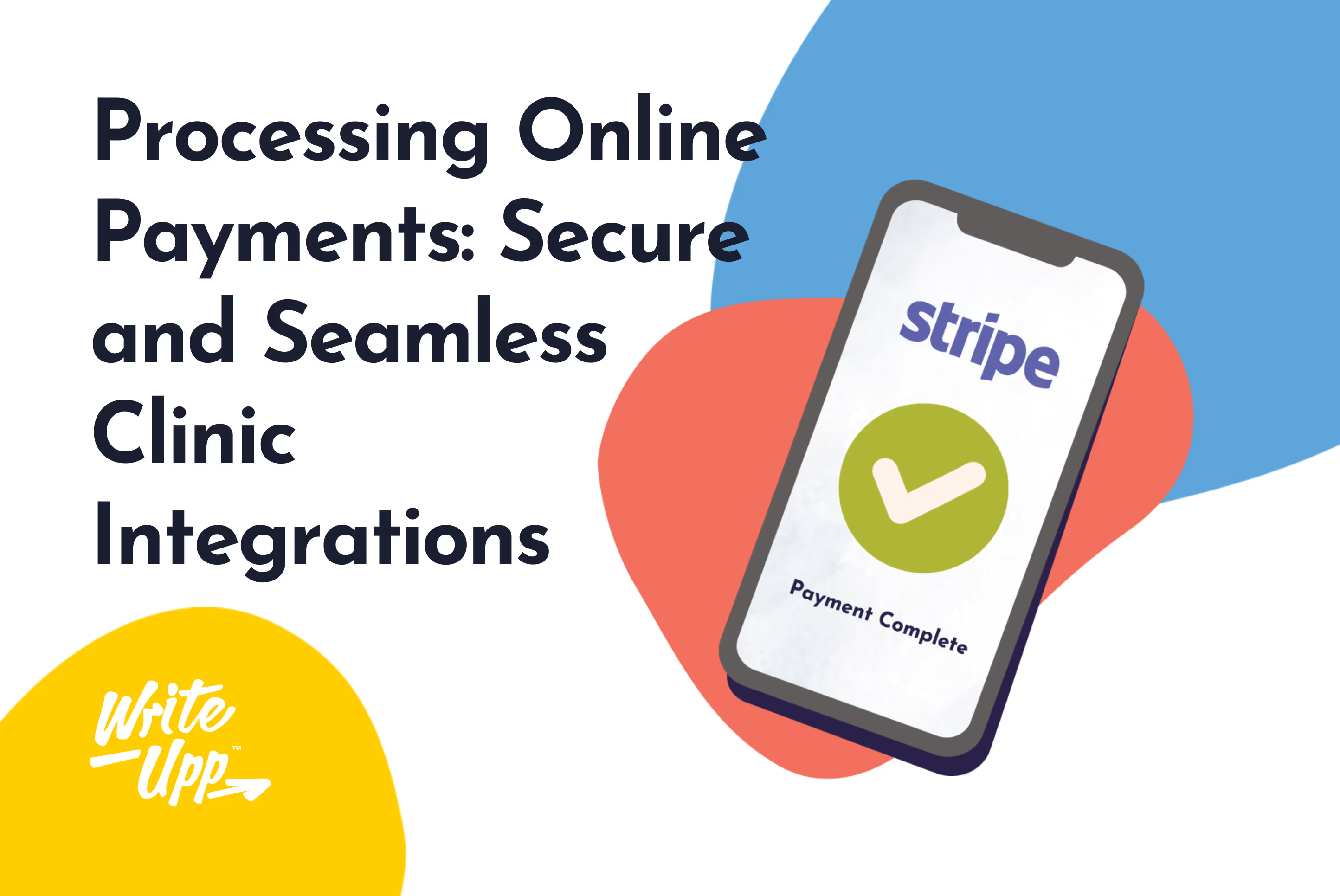Managing a private medical practice can be a complex and demanding task. From appointment scheduling to billing and patient records, countless aspects must be handled efficiently.
This is where a patient management system offers a comprehensive solution to streamline operations and improve overall efficiency.
In this article, we will explore the top 10 features that make patient management systems an essential tool for private medical practice owners in the UK.
Why Do You Need a Patient Management System?
As a private practice owner, you face the dual challenge of running your practice effectively while ensuring high-quality patient care. A comprehensive patient management system is critical in navigating these challenges. This software significantly enhances your practice's efficiency by digitising patient records to make them organised, secure, and easily accessible.
It streamlines appointment scheduling and billing, automating processes to reduce manual errors and improve patient satisfaction with faster services. Integrating with billing systems and insurance providers also supports your financial management tasks. Plus, a patient management system's reporting and analytics capabilities provide valuable insights into your practice's performance, aiding you in making informed, data-driven improvement decisions.
Ultimately, a patient management system is indispensable for your practice. It allows you to focus more on patient care and ensures the efficient management of administrative tasks in today's technology-driven age.
10 Must-Have Features of Patient Management System
With many software options available, it can be overwhelming for private medical practice owners to choose the right one. To simplify the decision-making process, we’ve listed the 10 must-have features of a patient management system so that you can make an informed choice to meet your practice's unique needs.
- Appointment Diary
A diary management system is a key tool that helps practice owners track schedules and patient flow, improving practice management and patient care. It optimises consultation slots based on patient needs and practice resources, minimising wait times and enhancing staff productivity. Moreover, it helps healthcare professionals manage their time effectively, allowing for thorough consultations and essential administrative tasks.
The appointment diary also plays a crucial role in reducing patient no-shows by facilitating reminder systems through various communication channels, which helps maintain a smooth schedule (more on that later!)
- Online Booking
Practice owners are leveraging online booking systems to tackle challenges in appointment management and patient experience, transforming the way practices operate. Online booking eliminates the need for manual scheduling and lengthy phone calls, offering a convenient platform for patients to book appointments anytime, anywhere.
This caters to modern patients' preferences and streamlines admin tasks, reducing errors and freeing staff to focus on patient care. Automated features like appointment reminders decrease no-shows, while real-time scheduling enhances patient satisfaction by allowing them to choose convenient slots and manage their appointments online.
- Billing and Invoicing
Billing software streamlines invoicing by automating tasks and ensuring accurate billing.
When choosing software for your practice, prioritise online payment options to offer clients flexibility in prepaying or paying post-treatment via invoice links. Ensure seamless operations by choosing software that integrates well with your accounting systems.
Security is paramount, so look for data encryption and secure payment processing features. Opt for software that allows you to customise invoice templates and adapt to your specific needs. Lastly, choose software with robust reporting and analytics tools for insightful real-time data tracking and financial performance analysis.
- Online Prescriptions
Online prescriptions have emerged as a transformative tool. They send prescriptions digitally to pharmacies and bypass traditional paper methods. Patients who need regular refills can benefit from digital prescriptions because they eliminate the need for additional trips for written prescriptions.
Integrating with your patient management software allows ePrescriptions to streamline workflow and reduce prescription fraud.
- Reporting and Analytics
Reporting and analytics enable practice owners to make informed decisions, enhance patient care, and improve operational efficiency. These tools allow tracking key performance indicators (KPIs) such as patient volumes, revenue, and expenses, offering insights into the practice's financial and operational health.
They give insight into patient demographics, service demand, and marketing effectiveness so you can adjust your marketing strategy. Data on patient outcomes and feedback helps identify ways to improve care quality and efficiency while meeting regulatory compliance and reporting requirements.
- Secure Patient Records
Protecting patient data is of utmost importance in healthcare. Your software should have strong security measures, including role-based access control, encryption, and regular data backups.
Compliance with industry standards, such as GDPR, ensures confidentiality and reduces the risk of unauthorised access or data breaches.
- Video Consultations
Video consultations, sometimes called telehealth, offer transformative remote medical consultations in UK healthcare. They break geographical barriers and benefit rural or underserved areas. Eliminating travel and clinic waits saves time and resources, enhancing practice flexibility and patient satisfaction.
Telehealth also reduces operational costs by optimising space usage and increasing patient volume, potentially boosting revenue. Integrating electronic health records enhances efficiency and decision-making despite challenges like GDPR compliance and the need for technological infrastructure.
- Online Forms and Assessments
Online or smart forms streamline data collection by eliminating challenges like illegible handwriting and manual data transfers associated with paper forms. Smart forms ensure informed, continuous care by centralising and automating data entry.
Data collection can be customised according to diverse medical needs, enhancing the specificity and relevance of patient data. Particularly with the growth of telehealth, these forms provide patients with an accessible means to share information from any location.
Due to stringent security measures, including encryption, access controls, and regular audits, online forms are indispensable for modern, efficient, and patient-centric care.
- Cashless Payments
Cashless payments streamline the billing process, reduce reception wait times, and improve patient satisfaction by enabling quick and seamless transactions. They also increase security by reducing cash handling errors, theft, and loss while providing a transparent payment record. Using services like Square to make payments online or in person offers unparalleled convenience, enabling swift transactions without cash.
Digital transactions simplify financial record-keeping, eliminating manual errors and facilitating better accounting practices. Offering online payment options appeals to patients, modernising the practice's image and supporting business growth.
- Automatic Email and SMS Communications
Automatic email and SMS communications improve patient experiences and streamline operations. They offer a direct and efficient way to send appointment reminders, follow-up instructions, and practice updates, enhancing patient engagement and reducing no-shows.
Automated messages can boost patient satisfaction by keeping them informed and involved in their care journey, from sending pre-appointment forms to requesting feedback.
Which Patient Management System Should I Choose?
This is different for every practice, and there is no right or wrong answer here.
The best thing to do before choosing which practice management software to use is to take advantage of a free trial, which most offer.
You don’t need to import your patient information into every system you try.
Set up a dummy client or two and work through a typical patient workflow to get a feel for it.
Whilst on your free trial, make sure you can tick off most, if not all, of these key factors:
- It boosts efficiency and saves you time
- It automates tasks and streamlines your workflow
- It enhances your clients’ experience
- It has a stable and reliable invoicing platform
- It is a scalable solution, so you can continue to use it as your clinic grows
If you have any questions or want to discuss what an integrated practice management solution could do for you and your practice, grab us for a live chat.
The button is just there in the bottom right corner of your screen.



Join over 50,000 clinicians that we've helped using WriteUpp
Start my free trial






